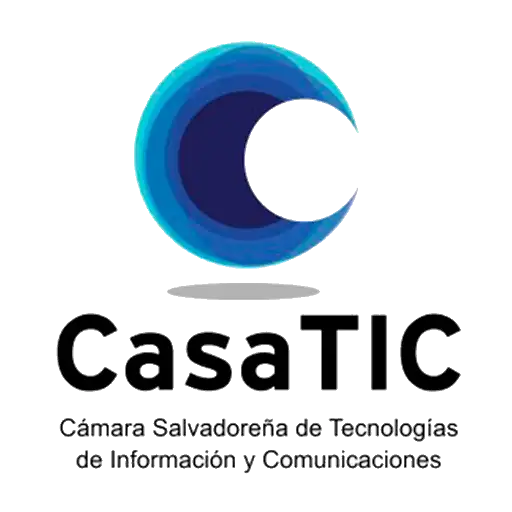-
Who we are
-
-
StrategyMission
To solve the challenges of organizations and communities through intelligent, secure, sustainable, and people-centered solutions, so they generate real value in their social and productive contexts.
VisionTo be the chosen company by organizations seeking to innovate with quality, purpose, and trust in the intelligent era.
Learn moreValues- Ethics and transparency
- Professionalism
- Respect
- Honesty
- Innovation
- Responsibility
- Effectiveness
- Integrity
- Customer orientation
- Punctuality
-
-
-
History
Sofis Solutions was born in 2005, in the city of Montevideo - Uruguay.
Since its inception, the main driver was and remains quality. This applies to processes, products, and relationships with the environment.The internationalization of the company It was one of the founding objectives. In the first stage, it expanded from Uruguay, and in the second stage, it opened offices in Latin American countries. Currently, it has offices in Montevideo, Panama, El Salvador and Ecuador.

-
-
-
Alliances








-
-
-
Certifications

CMMI-DEV-3
More informationNational Quality Award
More informationISO 9001:2015
Quality Management SystemISO 37001:2016
Anti-Bribery Management SystemISO 14001:2015
Environmental Management System
-
-
-
SustainabilityLearn more
Sofis Solutions integrates environmental, social, and governance (ESG) principles into its management and operations, driving sustainability through Digital Transformation. Its strategic approach prioritizes energy efficiency, digital inclusion, and transparency in digital governance, contributing to the responsible development of organizations.

-
-
-
What we do
-
-
IT projectsLearn moreAt our Software Factory, we specialize in providing software development solutions with a focus on excellence and sustainability.
-
-
-
Software qualityOur software quality services comprehensively address the aspects or dimensions of software quality, addressing this approach throughout the entire software development cycle.
- Manual and automated functional suitability testing
- Performance testing
- Software product quality
- Software quality consulting
Learn more
-
-
-
Staff AugmentationLearn moreWhat is IT Staff Augmentation? IT Staff Augmentation is a specialized technical staffing model that enables organizations to increase their agility and respond to the changing technological needs of the market.
-
-
-
ConsultancyIn the public sector, strategic decisions and projects with citizen-centered designs and excellence have the power to transform entire communities.Learn more
-
-
-
BIonA SuiteBIonA Suite is a comprehensive platform for the intelligent management of processes and services in public and private organizations. BIonA Suite facilitates smart transformation with a focus on public value and user experience. Learn more
-
-
-
Projects
-
-
Recent projects
 FOCAL Regional StudyFOCAL - El Salvador
FOCAL Regional StudyFOCAL - El Salvador Single Registry of Uruguayans AbroadMinistry of Foreign Affairs - Uruguay
Single Registry of Uruguayans AbroadMinistry of Foreign Affairs - Uruguay Population and Housing Census 2023National Institute of Statistics - Uruguay
Population and Housing Census 2023National Institute of Statistics - Uruguay
-
-
-
Digital Public InfrastructureWhat are Digital Public Platforms?ProjectsProducts
-
-
-
-
Mobile applicationsWe create hybrid, native, and PWA solutions for devices with Android and iOS operating systems.
Some of our projects:Digital Patrols, Ecuadorian Bovine Information System, Easy Budget UY, Digital Portfolio, SIGES Teachers App, SIGES Parents App.
Learn more
-
-
-
FOCAL regional studyThe purpose of the study was to carry out a regional analysis with the objective of identifying and evaluating the maturity level of the member countries of the Latin American Government Accounting Forum (FOCAL), currently composed of Argentina, Bolivia, Brazil, Chile, Colombia, Costa Rica, Ecuador, El Salvador, Guatemala, Honduras, Mexico, Nicaragua, Panama, Paraguay, Peru, Dominican Republic, Uruguay and Venezuela.Learn more

-
-
- AI
-
-
Artificial IntelligenceLearn moreAdvanced Artificial Intelligence (AI) and Big Data solutions that transform the way organizations make decisions and optimize their operations. We specialize in the development of intelligent autonomous agents and generative AI solutions using large language models (LLMs), both on local infrastructure and in the cloud.
-
- Press Room
-
-
Sustainable development
-
- Innovation
-
-
#GreenSofisMore information
Methodology
#GreenSofisSustainable Digital Transformation Conference
#GreenPath
-
-
-
AI For Everything
It is an initiative by Sofis Solutions, from the Intelligent Solutions Division, that promotes the adoption of artificial intelligence as a key driver of efficiency and effectiveness in the intelligent era.
It integrates both administrative and operational processes, promoting an organizational evolution where technology amplifies knowledge, optimizes decision-making, and generates value in a sustainable and inclusive way.
More information
-
- Contact us
- ES PT-PT
-

Sustainable Software Engineering Focuses on a Shift in Priorities and Approach
Montevideo, January 18, 2023.
Sustainability is one of the priorities in human activities in general. From the technology sector, it is possible to contribute to building and running sustainable software applications that help minimize the carbon footprint. This can be achieved through the use of various methods and tools applied throughout the software lifecycle.
Sustainable Software Engineering arises with the goal of establishing standards and applying best practices to create sustainable software or applications, thereby contributing to the conservation of natural resources. This approach can reduce energy consumption and produce fewer carbon emissions.
This discipline is based on eight principles that guide the development of more environmentally friendly systems. Its approaches range from creating more efficient applications to changing protocols used for data transmission.
To learn more about this discipline, in the following interview, Martín Miguez, developer at Sofis Solutions, shares the importance of creating solutions that reduce the carbon footprint of every aspect of an application and provides some tips for incorporating best practices in software development.
How did the practice of Sustainable Software Engineering arise?
Sustainability is a concept that encompasses almost every aspect of our lives. This is due to the indiscriminate use of resources, the consequences of which we are beginning to see. Software Engineering is not exempt from being part of the problem.
From this perspective, sustainable solutions began to emerge to optimize resources from a Software Engineering viewpoint.
What role does Software Engineering play in Sustainable Development?
Software Engineering can play a very important role in this area. The impact of technologies on the CO2 footprint is becoming increasingly visible, mainly due to energy consumption, though the sources generating that energy are the main cause of the footprint.
It is clear that sustainable technologies can be implemented long-term with environmental awareness, from creation and implementation—where Software Engineering plays a key role—to maintenance and updates.
Why is it important to implement sustainability practices in the software lifecycle?
Sustainability practices help in many ways, primarily by reducing the CO2 footprint, using technological tools, processes, and methods. They also raise environmental awareness among those implementing them.
Another factor that directly impacts software quality, as these practices aim to minimize energy consumption, optimizing processor use, data management, client-server interactions, etc., resulting in more efficient, faster, and scalable systems.
What are the benefits of developing a product or service from a sustainable perspective?
There are many benefits. From a sustainability perspective, the direct benefit is the reduction of the CO2 footprint.
Indirect benefits are also significant, from improved product quality to business advantages. Sustainable products and services are more accepted due to the growing environmental awareness of the general population, which can translate into customer or user retention and compliance with environmental quality standards.
How can sustainability be incorporated into daily software development practices?
First, create a company-wide plan, then generate practices and processes to foster a culture of sustainable software development. Practices and processes can translate into policies, tools, methodologies, standards, and more.
I say "within possibilities" because many practices require investments of time and money. Also, clients may not agree with certain changes or workflows due to established methodologies. However, there are many ways to incorporate these best practices.
What types of software best practices can be applied for Sustainable Development?
Nowadays, some companies use servers or PCs indiscriminately (multiple development, test, staging environments, test databases, applications, mocks, etc.), often running 24/7. Solutions include virtual machines, containers, or cloud services, each optimizing efficiency.
Another practice is optimizing work environments by improving configurations to minimize unnecessary processes (unused open projects, plugins generating constant processing, requests, updates, automated builds, etc.). Another key point is programming language usage; often, we use familiar methods or functions without knowing more efficient alternatives.
While tools like SonarQube help, training, research, developer feedback, and general rules are also essential to promote sustainable practices.

El pasado 20 de noviembre se llevó a cabo en la Sala Verdi la edición piloto de Burocracia Creativa UY 2025, la antesala local del Creative Bureaucrac......

Between October 14 and 16, 2025, the XI Forum of Government Accounting Offices of Latin America (FOCAL) was held in Santiago, Chile, a regional refere...

Within the framework of the United Nations Global Compact's 2024–2025 strategy, which proposes five transformative changes to accelerate business impa...












 Digital Signature
Digital Signature BionA Suite
BionA Suite Biona SIgn
Biona SIgn






















